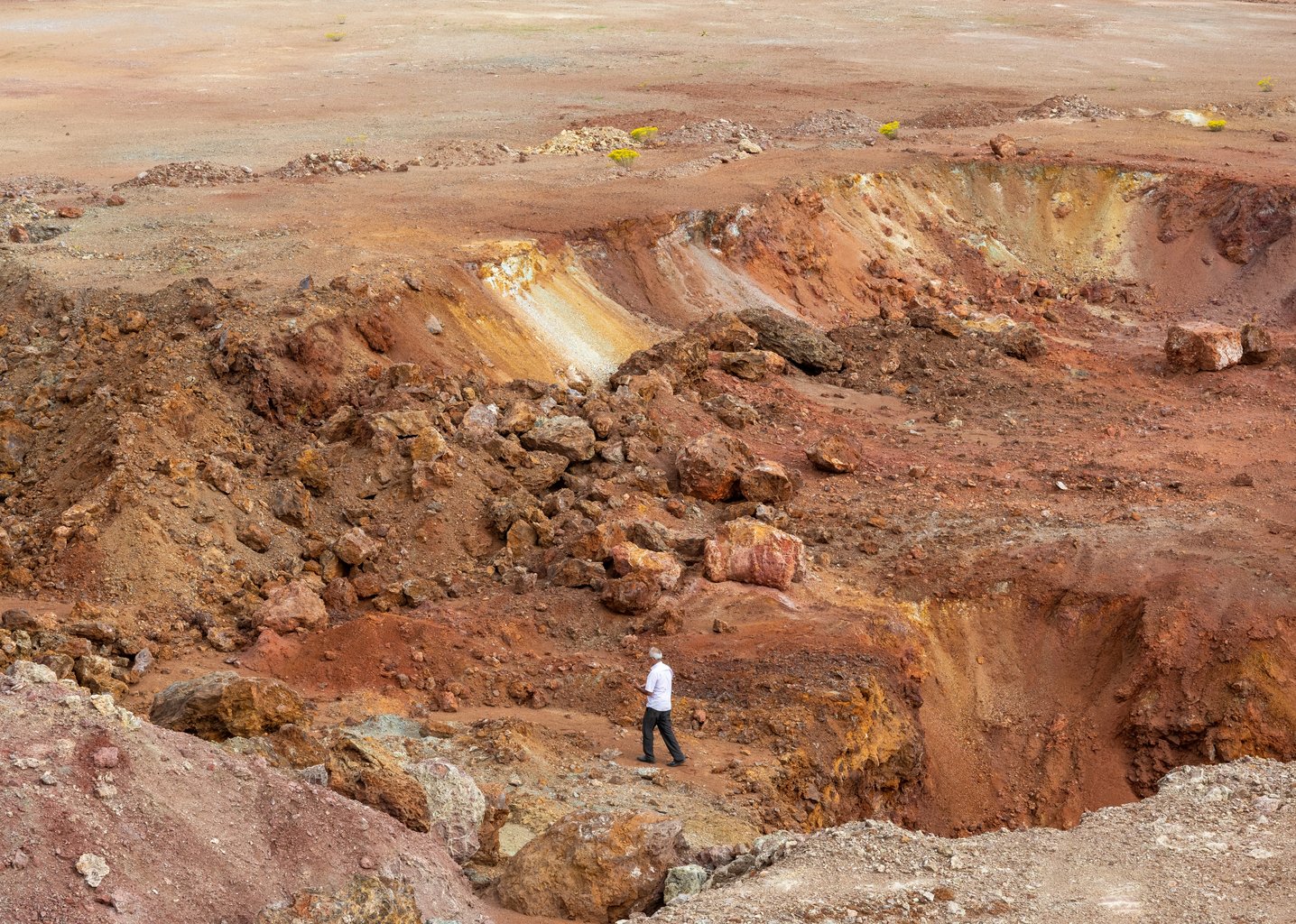The sound of explosions from the mine fills the tent. The villagers of Kalemoğlu no longer flinch. They have been standing vigil here for 22 days –underneath a banner that reads, “We defend our forests against plunder.”
The tiny village of Kalemoğlu is located in the highlands of western Turkey, near the town of Gördes. The mountains here are covered in forests bursting with centuries-old black pines, junipers, and oak trees, but they also hold a deeper wealth: nickel. Since 2007, the Meta Nickel Cobalt Mine Company has probed further, drilled deeper, and extracted more from the forests surrounding Kalemoğlu. The once-green plateau has become increasingly filled with dried-up ponds and industrial equipment.
On the 19th of May this year, the mining company attempted to expand its operations and drill in the Kocamurt Forest, which lies just a few hundred metres from the centre of the village. For the men and women of Kalemoğlu, this was a step too far, and though they are a small village of just a few hundred people, they resisted and successfully drove the company and its drilling equipment away. Since then, they have stood guard at the entrance to the forest in their makeshift tent.
At first glance, the story of Kalemoğlu is a familiar one of environmentally destructive industry versus greener ways of living. The villagers, typically engaged in cherry and walnut farming, are currently on a "life watch," as they refer to it, as their water reserves, forests, and agricultural lands are threatened by the mine. The nickel mine, they claim, is destroying the locals' living spaces.
What gives this particular dispute a fresh twist is that far from being a rogue player acting in defiance of environmental regulations, the Gördes mine is, in fact, potentially a key part of the European Green Deal, the European Union’s initiative to become a net-zero emission continent by 2050. The biggest step to achieve this goal was for EU countries to turn to electric vehicles (EVs), and nickel is a vital component in EV batteries.
As the only nickel mine in Turkey and one of a handful in Europe, the Gördes mine is seen as an important asset for building and developing EV capacity across the continent. What is often underplayed is the uncomfortable reality that electric mobility, marketed as climate-friendly, harms the environment even during the production phase. Right now, the Meta Nickel Mine is destroying forests and water basins vital for wildlife protection and slowing climate change.
The Black Sea travelled to Gördes in June to investigate the Meta mine and interviewed dozens of people, including scientists, farmers, activists, and politicians, who tell of a troubled history of destroyed forests, polluted water basins, and toxic spills that have irreversibly damaged the local ecosystem.
Gördes is a reminder that Europe’s Green Deal may not always be so green. It relies upon the same destructive tendencies that the extractive mining industry has perpetrated for generations and is further threatening the way of life of rural communities already straining under the climate crisis.
Dropping acid and heavy metal thunder
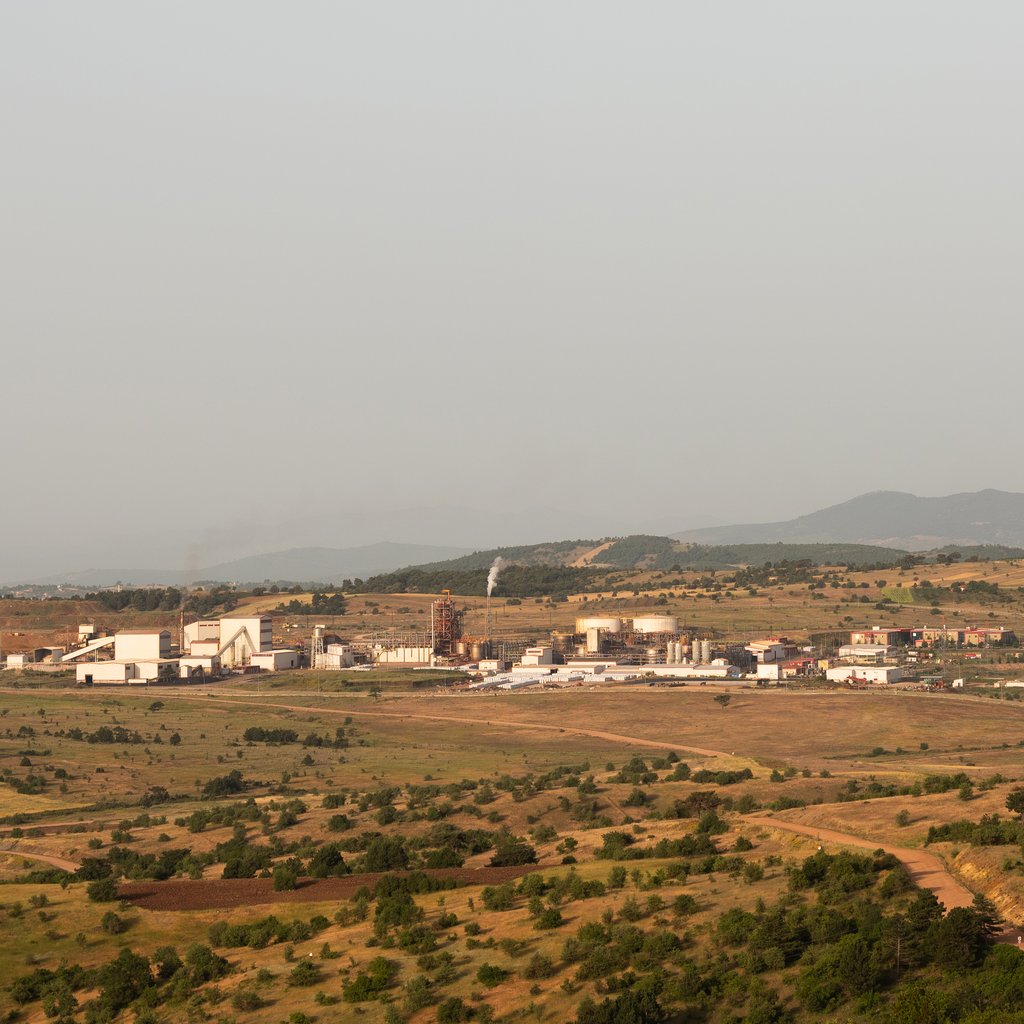
Meta Nickel's facility near Kalemoğlu village, Gördes, Manisa.
Established in 2000, the Meta Nickel Cobalt Mining Company began initial surface explorations in the Gördes region in 2007. That same year it joined the Zorlu Holding conglomerate and started ore production. The mine has grown aggressively since then, fueled by the increasing appetite for nickel in the electric mobility sector. In this context, in 2018, Meta Nickel Cobalt Mining Company partnered with the Chinese company National Modern Energy Holdings Limited, an investor in electric mobility and the company began exporting the nickel to European and Asian countries. By 2023, it had destroyed approximately 3,000 hectares of agricultural and forest land in Gördes to meet the nickel demand.
In November 2023, the Turkish government approved a new Environmental Impact Assessment (EIA) report that extended Meta Mining’s activities and the project’s lifespan by 29 years. According to the EIA report, the annual ore capacity will be increased to eight million tons. Now comes the sulphuric acid. The separation and enrichment processes need 350 kilograms of the highly corrosive substance per ton of ore. Then there are the explosives: to extract the ore from the hard rock, they plan to explode 120,000 kilograms of dynamite each year. The expansion will cause the destruction of the Kocamurt and Kabakoz forests, where the villagers of Kalemoğlu keep vigil.
Nickel deposits are found in the top layer of soil. So the Meta Nickel-Cobalt Mine, like many mining facilities worldwide, operates the "open-pit mining and high-pressure leaching" method. This requires the complete excavation of the topsoil, harming extensive forestland and habitats that have formed over thousands of years. Separating the ore from the soil means sulphuric acid, and this can lead to soil and water basin pollution. The ecological destruction caused by nickel mines in Indonesia and the Philippines has become irreversible.
The Meta nickel mine has had its own history of environmental disasters since it started production in 2007. There are many reports, including from locals, of tankers carrying sulphuric acid for the mine involved in significant traffic accidents, spilling tons of chemicals into the soil, which is extremely harmful to the environment and human health. In 2020, during heavy rainfall, Meta Mine secretly discharged its waste pool, which was filled with hazardous chemicals, into a local stream over fear that it would collapse. Then two years later, in 2022, the pipes carrying toxic materials from the ore enrichment facility to the same pool burst, releasing tons of hazardous waste into the nearby agricultural lands and water sources.
The mine operates in an area defined by the Ministry of Agriculture and Forestry as the "Çağlayan Dam Drinking and Utility Water Long-Term Protection Zone," serving as a "farming area," "meadow-pasture," and "forest area" that provides drinking water for İzmir and Manisa.
The land around the mine and the surrounding villages is contaminated with heavy metals and high levels of arsenic and sulphur. Environmental Engineer Prof. Dr. Enver Yaser Küçükgül says that mining in areas with such dirty soil poses significant risks to human health and natural habitats. According to Küçükgül, the waste from processing ore with sulphuric acid creates "acid mine drainage" through rainwater and dust clouds, poisoning the region's water sources.
"The mine is located in an agricultural area, pasture, forest, and drinking and utility water area. In short, it contains the ecosystem necessary for human survival,” he says. “A mining project that continues in this region would destroy the ecosystem there and disrupt the region's genetics."
Over time, these kinds of chemicals, like arsenic and sulphuric acid, ravage the human body and can cause many diseases, including kidney failure, cancer, and chronic obstructive pulmonary disease (COPD). Indeed, among the villagers' common complaints are the adverse health effects and genetic abnormalities they observe in their animals.
A family doctor who has worked in the villages around the mine for more than ten years spoke to The Black Sea on condition of anonymity for personal safety reasons. "As soon as the nickel mine started operating, cancer rates began to rise. The chemicals produced by the mine inevitably come into contact with air and water,” he says. “We have started seeing many young cancer patients. Especially thyroid cancer and lung cancer are quite common."
Muddy waters
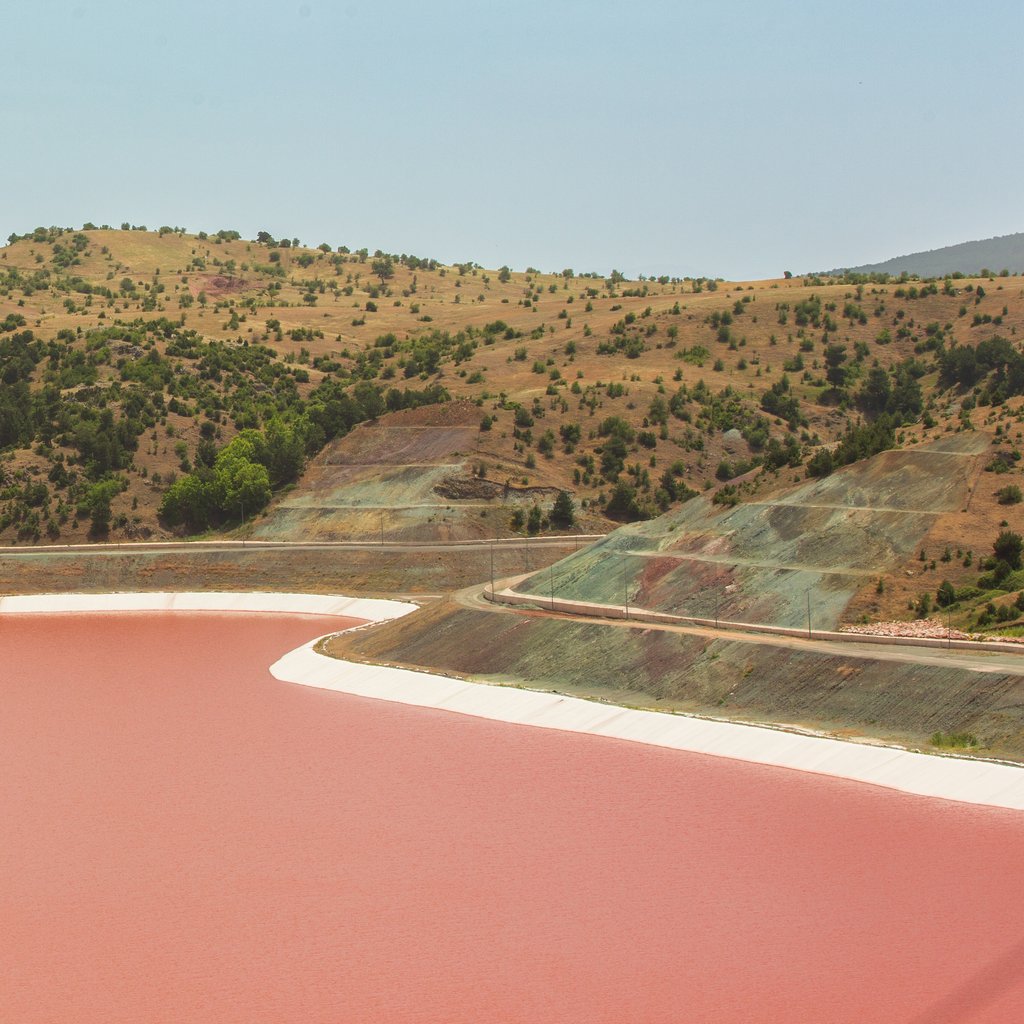
Wastewater treatment system near Kalemoğlu village in Gördes, Manisa. The wastewater turns red due to sulfuric acid.
Kalemoğlu meets its basic water needs from wells drilled with the help of boreholes. The villagers told The Black Sea reporters that the mine has drained and polluted many water sources, rendering many of them unusable.
"We doubt the cleanliness of our waters. No official source provides information. We don't drink water from the tap anymore. But we wash our hands, dishes, and take showers. We also use this water for our animals and agricultural products. So, we are affected in some way," says Kader Beyhan, one of the villagers fighting the mine since its establishment and a climate activist who volunteers with the Gördes Environmental Association.
Elveda Arı, a 52-year-old farmer who spoke to reporters while planting cucumber seeds, tells us that she meets her water needs from the last reservoir in the Kocamurt forest, which the mine will also destroy. "They left no unpolluted water for us," she says, explaining that they now buy water from the market, "My children live in the city. Whenever they come, they bring me a few plastic bottles of drinking water from the market. We can no longer drink our clean water since this mine came."
The Ministry of Health analyses the drinking water of the villages every three months. The analyses conducted on Kalemoğlu’s water after the construction of the mine show that arsenic levels are way above normal. In 2013, the drinking water in Kalemoğlu Village contained 12 mg/l of arsenic, significantly higher than the 0.1 mg/l of the World Health Organization (WHO) standard for "drinking water quality."
Since 2013, however, the ministry has kept the results of these analyses secret. Former Kayacık Town Municipality President Ramazan Koyuncu, who has opposed the mine from the beginning, says he has repeatedly applied to official institutions to access the water results but has been rebuffed each time. Koyuncu believes they are deliberately being concealed to protect the mine. "The Meta mine company is almost untouchable,” he says. “Despite all these environmental disasters, there has been no inspection or sanction against the mine. No information is shared about the water's cleanliness. We have requested the installation of purification systems in the region's water wells multiple times, but they didn't even consider it."
Culling the herd
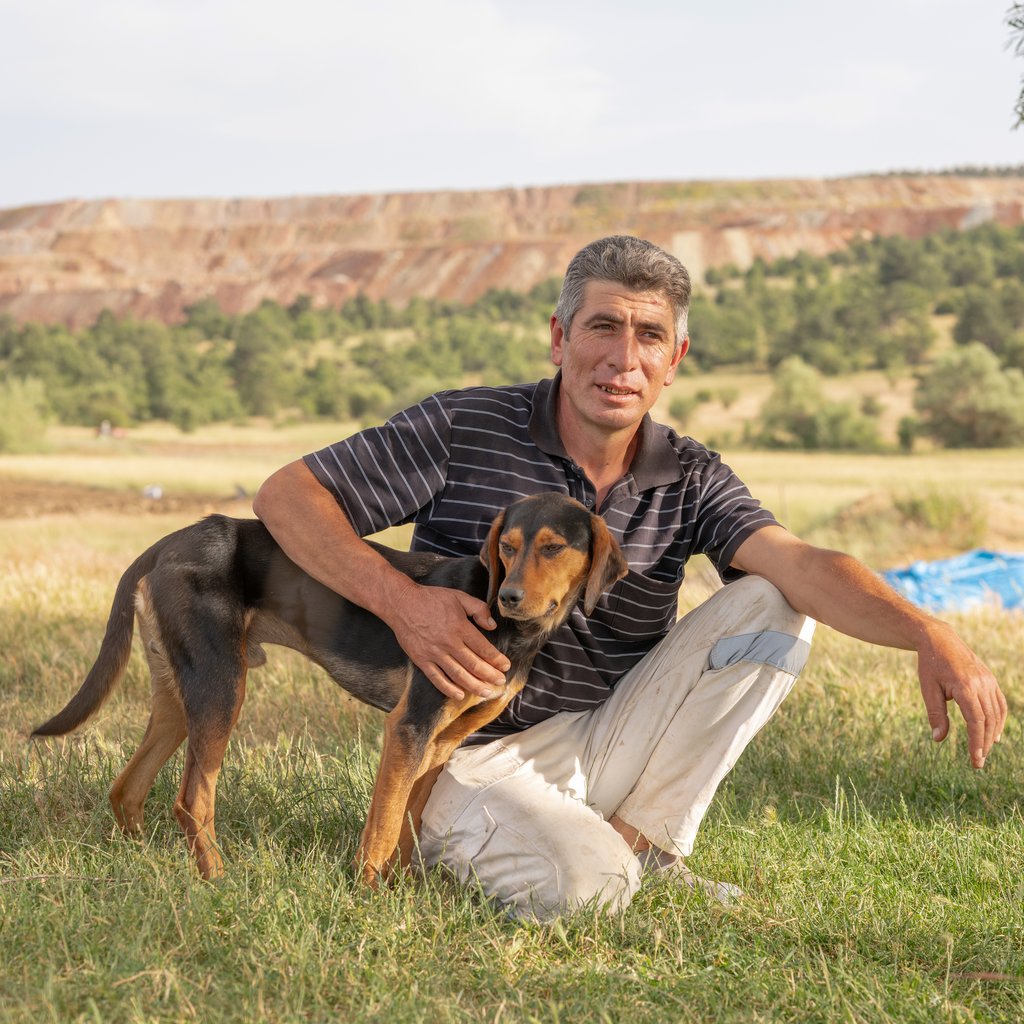
Fatih Ayaz lives close to the mining facility in Kalemoğlu village, Gördes, Manisa.
Among other casualties are the farm animals. During a visit to the site, reporters witnessed goats grazing in the grasslands around the construction area. They belonged to Osman Kurnaz, a herder from the nearby village of Fundacık. He says, "Goats are stubborn and never forget where they graze; there used to be pastures where the mine is now, so it's hard to stop them sometimes."
Osman Kurnaz is the only villager from Fundacık Village who opposes the mine. He has about 60 goats but states that livestock farming is becoming increasingly impossible due to the mine and that animals are poisoned by the grass they eat: "They exhausted our pastures and water, and on top of that, they poisoned our grasslands. We no longer get as much yield from the animals as we used to. Most of my animals miscarry during pregnancy. Since there are no other grazing areas, I have to graze them here."
One livestock farmer who frequently encounters mutated animal births is Fatih Ayaz. Ayaz lives about 50 metres from the mine’s waste dump and complained of a decline in yield. “Many of our sheep have inflamed udders from the grass they eat, which spoils the milk,” he tells us.
More disturbingly, Ayaz believes that ever since the mine arrived, animals began to give birth to mutated offspring. "We don't know if it's from the grass they eat or the water, but ever since this mine arrived, animals have started to be born deformed. Chickens are now born with four legs and two heads. Sheep are born either deformed or with dual genders.”
The livestock farmers we interviewed in areas far from the mine said they had no cases of mutations and observed no abnormal health problems in the animals.
Approximately ten villages that rely on agriculture and livestock in this region are directly affected by mining activities. Kalemoğlu is the only village that objected when the mine eventually reached its borders, with the others arguing that the industry creates jobs for the locals. Kurnaz said that the other “villagers stopped farming and animal husbandry and started working in the mine,” which also provided jobs and scholarships to the younger residents. “In short, the villagers do not want to oppose the mine because it has financial benefits,” he says.
Kalemoğlu has the status of a "forest village," meaning that many of the needs of its people are met from the forest and pastures.
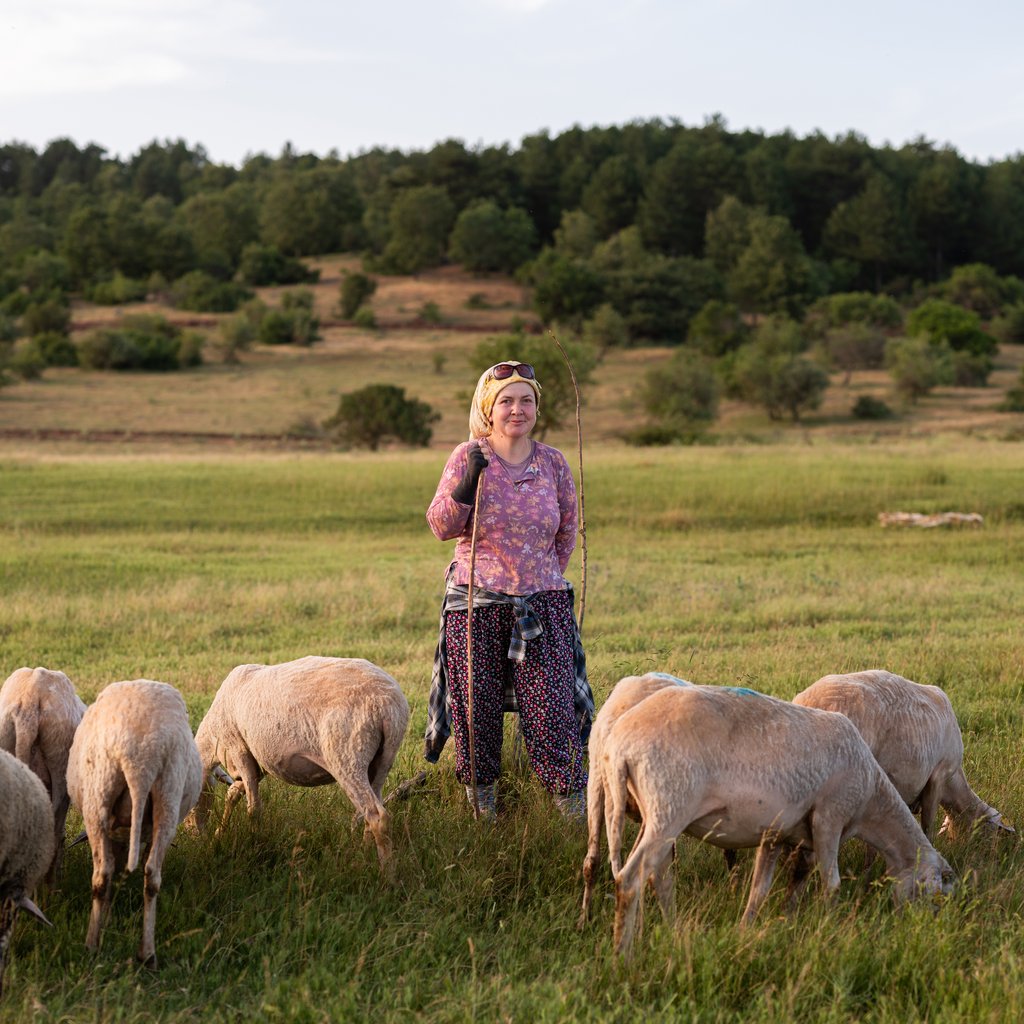
Kader Beyhan, environmental activist
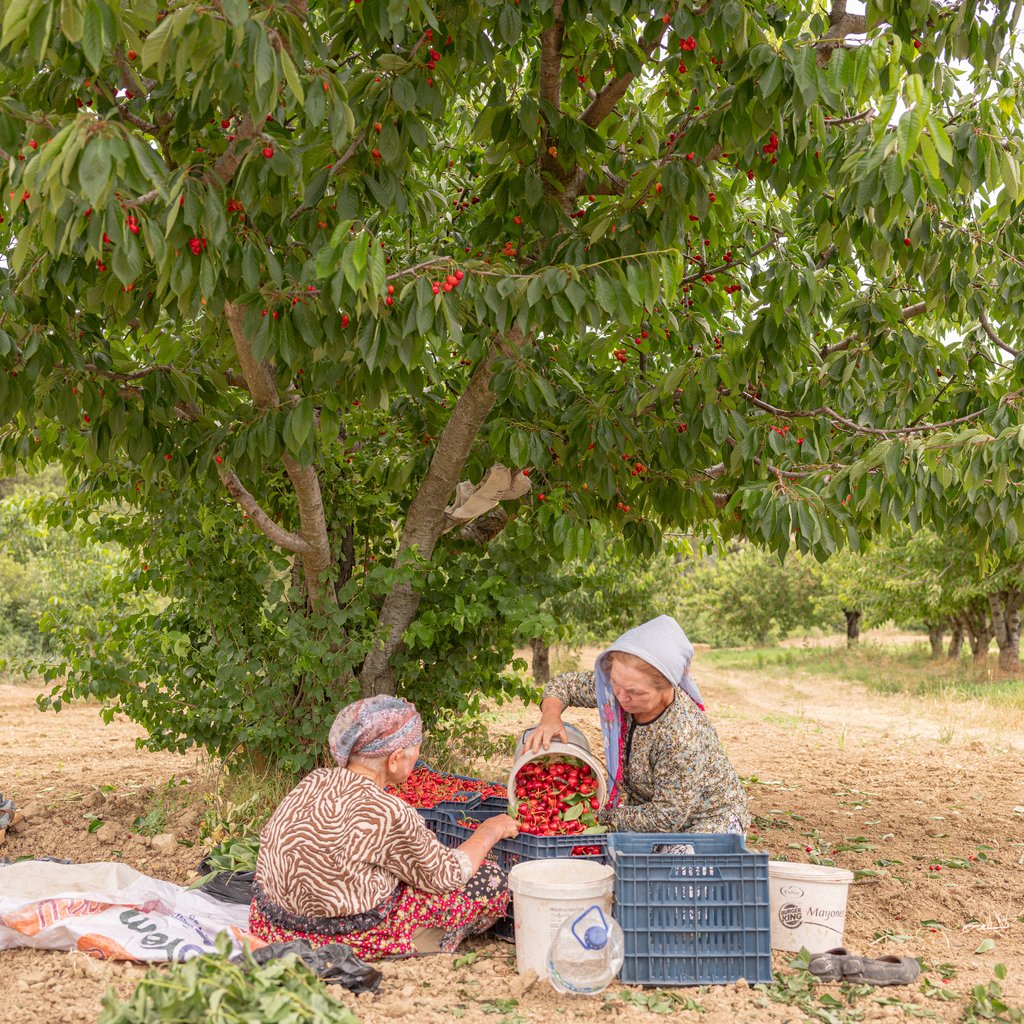
Reyhan Beyhan is picking cherries from her land in Kalemoğlu village, Gördes, Manisa.
The "eye-washing" of Fake Plastic Trees
Hüseyin Çalı, a 64-year-old father of two, has spent his life in Kalemoğlu Village farming and raising livestock with his wife, Hatice Çalı, at the foothills of the black pine forest. Prolonged droughts in the region mean that they have now to resort to dry farming, he tells The Black Sea.
"This pond used to be full all year, providing enough water for our crops. But since the mine came, the soil no longer retains water. It doesn't rain like it used to,” he says. “Centuries-old untouched forests and agricultural lands have been destroyed without a blink. They have drilled everywhere with boreholes. There are no groundwaters left that haven't polluted or dried up."
The mine, located about 500 metres from Çalı's agricultural lands, has virtually swallowed the forest. What is particularly galling for Çalı is that there are official protections for the forest, especially the native juniper trees. The mine is seemingly exempted. “If a villager harms these trees, they face heavy fines. When it comes to the mine, no one says a word about the destruction of forests. This is what saddens me the most."
We climbed the Matal Hill, which looms over the village. The area, says Elveda Arı, has been “ruined” by the mine. The mountain, covering 750 hectares, stands like a giant before us, melted by construction machinery. The heart of the mountain has been dug inward as if searching for its core. In place of the centuries-old black pine, oak, and juniper trees, acacia trees have been planted as a token of restoration.
Prof. Dr. Doğan Kantarcı, an expert in forest ecosystems who has long studied mines in the Aegean region, points out that nickel mines are among the mining types that cause the biggest damage to natural habitats. Kantarcı states that the rehabilitation efforts by mining companies are merely a "deception." In his opinion, the areas destroyed by the Meta mine will never return to their original state and that planting acacias instead of pines is a form of "eye-washing": "The seedlings planted here are not true acacias but a species we call false acacias,” he says, unsuited to Gördes’s dry climate. “This is a common practice in mining. The goal is not to establish a forest but to create greenery. It's a deception."
After the Gold Rush
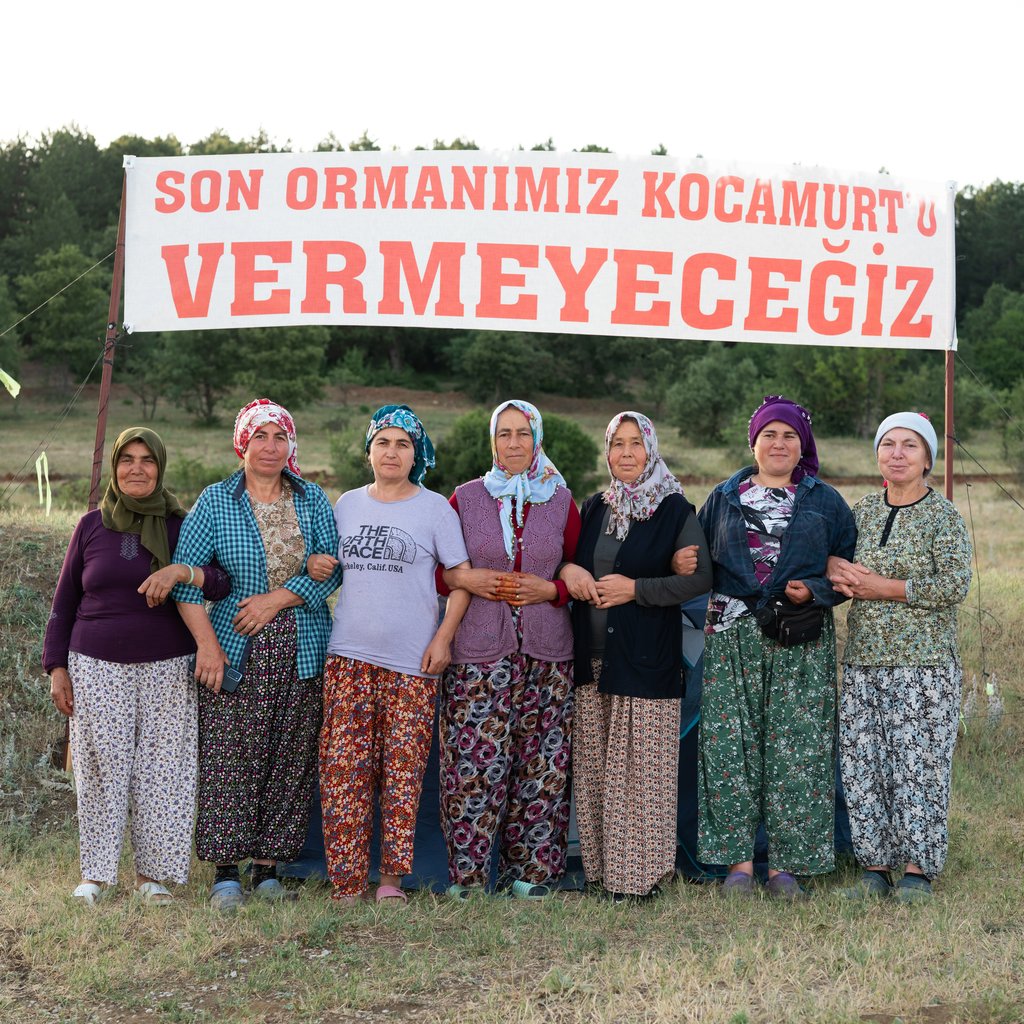
Kalemoğlu villagers pose for a portrait in front of a banner that reads, "We will not give away our last forest, Kocamurt."
The race to cut emissions has been spearheaded by EV advocates, and their arguments appear to be working. Over 40 governments worldwide have pledged to convert their internal combustion engine to electric vehicles by 2050, with the EU countries and many others banning the sale of new gasoline-powered vehicles from 2035.
This has, in turn, led to a massive rise in demand for minerals and metals necessary for EV production. Global consulting firm S&P Global Market Intelligence predicts that nickel demand in the battery sector will quadruple by next year, reaching 35% of global metal demand.
Meta Mining plans to capitalise on that demand. In 2018, Zorlu Holding’s Vestel and China-based GSR Capital signed a deal to build a factory for producing batteries for electric vehicles. In 2022, they announced the first lithium-ion battery production for Turkey's domestic car TOGG using nickel and cobalt extracts from the Meta mine.
That same year, Vestel signed a preliminary agreement with Netherlands-based Accell Group to supply batteries for its electric bicycles, produced in its Manisa factory using nickel-cobalt from the Meta Mine. The bicycle batteries were due to be exported in the first quarter of 2024.
Neither Meta Mining nor Accell replies to our questions.
Meanwhile, the men and women of Kalemoğlu hold their vigil even as the mine expands its operations around them. As with many environmental movements, women are at the forefront of the resistance against Meta Mining’s plans in Kalemoğlu."We have come to our senses now," one villager tells us, echoing similar statements by many in Kalemoğlu. "We never imagined this mine could come so close to our village."
For those in Kalemoğlu, the stakes have never been higher. "These forests are our lungs,” Kader Beyhan tells us. “If they continue to be destroyed, we will be left breathless."
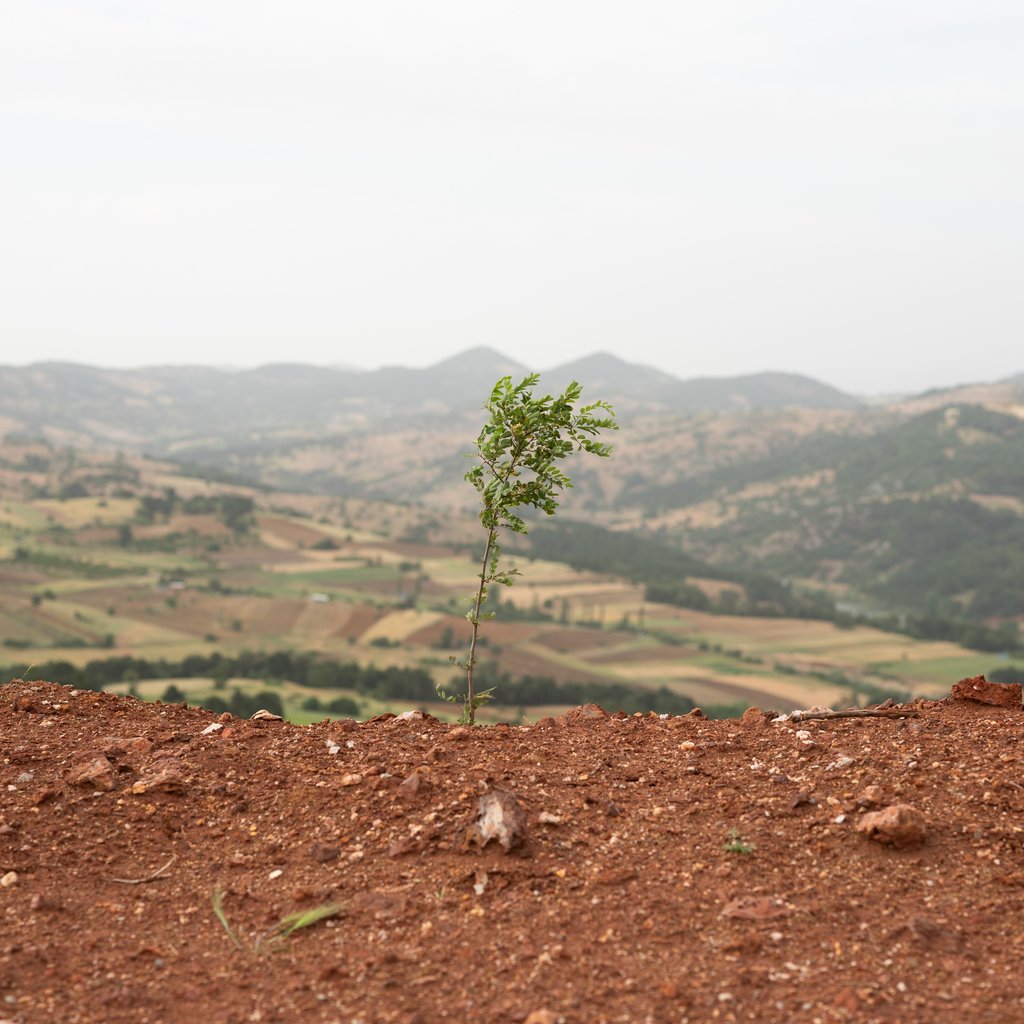
Newly planted false acacia tree on Matal Hill.
Photographs by Özge Sebzeci
Edited by Himanshu Ojha, Mina Eroğlu
Additional reporting by Zeynep Şentek, Cemre Demircioğlu
